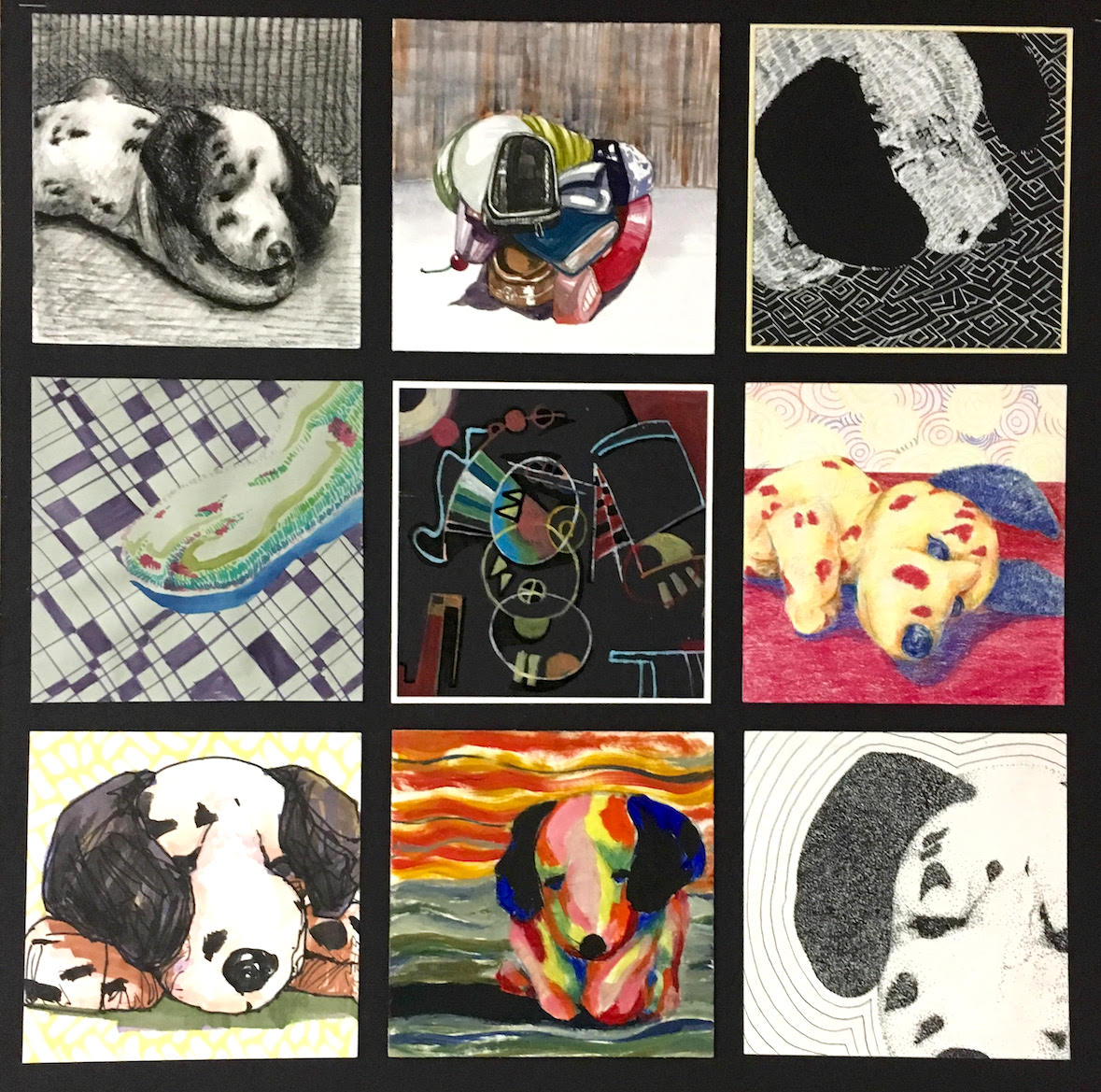I enjoy coming up with visual art assessment tools. We all want to see that our students authentically understand important concepts and vocabulary. What better way to do this than through a theme and variation lesson? In my room, this lesson acts as a midterm assessment tool.
Here are the simple steps you will need to incorporate this project into your classroom.

Step 1: Choose an object and draw it nine times.
First, have each student choose an object. The object should be something personally meaningful or visually appealing to them. Then, have students draw the object nine times using nine different views. It’s never a bad idea to have them sketch out a few ideas in their sketchbook or visual journal before they move to their final papers. In my room, I give students size parameters. Doing each drawing on a 6” x 6” white drawing paper or poster board square works well.
Challenging students to come up with nine different views makes this lesson exciting from the beginning as students are required to look at their objects in creative ways. For example, they might include a bug’s-eye view, looking up at the object, or a bird’s-eye view, looking down at the object. Other views to consider include foreshortened, zoomed in, zoomed out, cropped, straight on, and more.
To take this project a step further for more advanced students, you can have students think about the purpose of the object when deciding on their views. Can they tell a story with the different views and how they’re arranged?
Once students are finished sketching out nine different views, it’s time to authentically assess their semester of learning through the use of media.

Step 2: Complete each drawing with a different medium.
The next challenge is to have students use only one media to complete each drawing. For example, they may choose to use graphite in one drawing, marker in another, and acrylic in another. The tricky part is that they can only use each media one time unless they choose one of their nine as a mixed media piece. This part of the lesson assesses a student’s ability to use specific media. You may also consider having them work with different color schemes so you can assess their knowledge of color theory as well.

Step 3: Mount the drawings to complete the project and reflect.
Finally, have students mount their nine final works onto a large piece of poster board as a final study. This is also a good time to have them reflect on the work they created. In my room, I give students a project evaluation form to highlight the objectives of the lesson. Students consider how much their observational and drawing skills have improved. They also have time to consider their technical ability, their craftsmanship, and their creativity.
Finally, I have students present their final assessment boards explaining which one is their favorite, and why. This way, students are not only creating art, but they are also successfully able to discuss the art they have made.
The final works are truly beautiful studies of personal objects and show growth in direct observational skills as well as media manipulation. This theme and variation lesson is a great teaching tool, as well as a great assessment tool that proves authentic artistic mastery. Plus, they look absolutely stunning when hung together in the hallway. It’s a great lesson all around!
If you’re looking for even more creative ways to assess your students, be sure to take a peek at the AOE course Assessment in Art Education. You’ll walk away with the ability to effectively implement a variety of assessments for lessons you already teach!
Have you used traditional art lessons as creative assessment tools?
How do you assess your students learning at the end the semester?
Magazine articles and podcasts are opinions of professional education contributors and do not necessarily represent the position of the Art of Education University (AOEU) or its academic offerings. Contributors use terms in the way they are most often talked about in the scope of their educational experiences.





